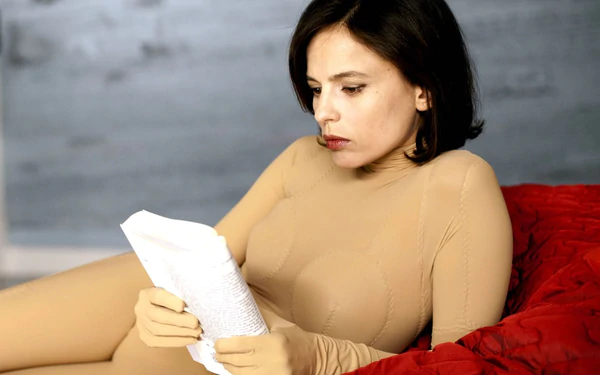I have always been a big fan of filmmaker Pedro Almodovar. His films are gritty, complex and thought provoking. They are modern with elements of pop culture.
I love it when I can think of a movie days after seeing it in order to figure out the nuances, metaphors and similes.
I am not writing this blog to review the movie or provide my thoughts on the plot and screenplay. There are plenty of reviews floating on the web, some I do not agree with at all.
The movie did appeal to my sensibilities. As one reviewer said it will definitely hold the interest of the art house crowd as it has enough distortion, torture and kink! I whole heartedly agree with the reviewer. So, if your interest is piqued by the provocative, bizarre and wickedly deviant themes or you simply want to be part of the hip, eclectic, bohemian art house crowd, go see the movie!! (Ha,ha) All I can say is I am still thinking about it!
What I want to share is the artistic element of metaphors and symbolisms in the film. In that sense, even though the film maybe expletive on the surface, it is laced with delicate subtleties that are symbolic. This makes it an intelligent film as it titillates and arouses the intellect of the viewer by compelling us to think, interpret and analyze it in a way we deem fit.
For starters, the skin colored suit worn by the main female character of the film symbolizes the skin on the bones. The suit fits like a beautiful glove on the body and accentuates each curve and asset. The suit is smooth and has a beautiful tone to it. But, the skin suit can be taken off and put on at any time. It is a disposal piece of spandex of no real value. I interpret it as the skin merely being a cover for the bones; an outer layer that can easily be shed like a chameleon’s and grows back again. We put a lot of importance on the outer skin, especially these days, but its value is simply of covering our entrails, the blood and the bones, that’s it. What is important is the inside that cannot be shed or replaced.
In contrast another character places so much importance on the outer layer of skin that when she does not like the sight of herself in a mirror, she kills herself. (I am not giving out the plot as it is pretty much explained in the first frame of the movie.) Her inside is valueless for her.
The home of the male character played by Antonio Banderas is a beautiful old chalet in Spain with stone walls and wooden floors. It looks like an ancient structure from outside, but the inside is modern and sterile. My interpretation is that appearances are often deceptive and not a true reflection of the soul of the person.
Another poignant scene is where Antonio Banderas is carefully binding and clipping a bonsai tree with a metal wire. It is a critical moment in the film as it sums up the essence of the film of confinement, force and constraint.
Antonio Banderas’s character goes through the movie with a stoic demeanor and his actions have a surgical precision signifying the coldness in his heart.
And last but not the least; the female character is a yogini who practices body twisting yogic postures defying all rules of bodily resistance. It is symbolic of human resilience. After a passage of time humans are capable of adapting themselves in any circumstance without resistance, no matter how horrific the circumstance.
If you do watch the movie, don’t watch it skin deep; look for what’s beneath the skin.


